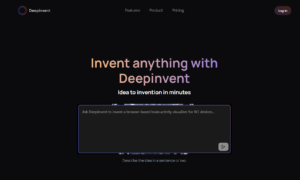Kubernetes is a fantastic open-source tool for any DevOps-enabled organization to deploy and build scalable, distributed applications. The speed you’re able to deliver updates to apps, self-healing capabilities, and scalability have changed the way that you build applications.
Mimicking the results received from Kubernetes manually would be extremely difficult, if not impossible. But, with all the problems Kubernetes solves, it also makes using it complex. Actions such as allocation of resources, usage of external load balancers, integration into your automation, and monitoring can make the process of Kubernetes troubleshooting complex.
It’s one thing to realize a cluster, container, or pod isn’t working, but a whole other to discover the root cause. A failure in any one of these layers could lead to an application crashing, overutilized resources, and a failed deployment. Like with any other tool, first check the logs.
1) Understanding your logs
With either your application logs or your cluster logs, you’re able to find a variety of potential failure points. But some limiting factors make logs challenging to use for developers, depending on where and when you’re failing. Also, in a large organization, it’s challenging to recognize who changed what and why.
Lack of Centralization
Depending on the point of failure, you might run into anything from a cluster log to an audit log. With different contexts or information, collecting and digesting the information can make for a long road to recovery. Unique logs spread across containers might start making your head spin as you begin uncovering different layers.
Time Sensitive
Event logs are extremely useful when discovering what’s happening when attempting to deploy a cluster. These are short-lived and don’t have a standardized format. Capturing and saving an event could be a sure-fire way to solve the issue quickly.
Variety of Formats
Without clear definitions, your logs’ formats are like different languages and context is difficult to determine depending on which type of log is being recorded.
2) Replicating locally or in lower environments
Kubernetes running in production is typically locked down, and developers work only in specific namespaces / lower environments. A common best practice is for an engineer or developer to recreate the issue locally. The problem is that your local dev environments don’t contain the same permissions, roles, and capabilities as a production environment would. Often, something like a run-time error isn’t caught at all in a local developer’s environment and would only be caught when running on a production-level environment.
Authentication to your different containers
It’s not easy to get into containers with issues and run commands to debug your issues. Authenticating into a container is a difficult workflow, and if you’re in a situation where you need to look inside dozens of containers, discovering issues becomes a painstaking task quickly without an effective tool to solve the issue.
3) Recovery Capabilities
Kubernetes is great at recovering from issues when there’s an error. Automatic restarts make it so your users may not even notice a problem, which also means you might not either without effective monitoring tools. Without a comprehensive tool to perform health checks on your applications, you’re more than likely blind to memory leaks or crashes.
Difficult to understand when issues arise
Knowing when issues occur is also critical to understanding the health of a service. A developer looking through their Git history may not be able to find issues within an application. Finding dependent configurations and their associated changes means involving more people and continually escalating until the exact configuration change is spotted.
4) Network / Resource Debugging
Depending on the type of cloud provider (or multiple cloud providers) that you use, your different labels are tough to use between environments. Changes take a lot of time to test, making debugging an extremely slow process.
Additionally, just understanding how your services play with one another is a significant challenge. Dependency management like a pod not being able to access another pod can be caused by differences between environments. Just getting to the root cause will more than likely present you with an almost unreadable log.
Resource management
Achieving high availability requires the correct number of nodes in your cluster. Increasing the amount of nodes is often a guessing game with best practices in mind. You could also be impacted by applications taking a massive number of resources away from everyone else. Because Kubernetes has no way of determining what resources it needs natively, you’re stuck with configuration files and limits set on resources.
Untangling this web and properly defining namespaces will alleviate a lot of these issues, but constant restarts will make any container unresponsive if configured incorrectly. Defining these policies is where troubleshooting becomes difficult. A set standard won’t work across the board. Each container needs your attention.
Summary
While Kubernetes troubleshooting is tough in several cases, recovering from incidents with effective monitoring and alert tools will take away a ton of the hassle. Easily translating the logs, infrastructure issues, or performance data will help pinpoint errors and get your fixes out the door to happy customers.

































